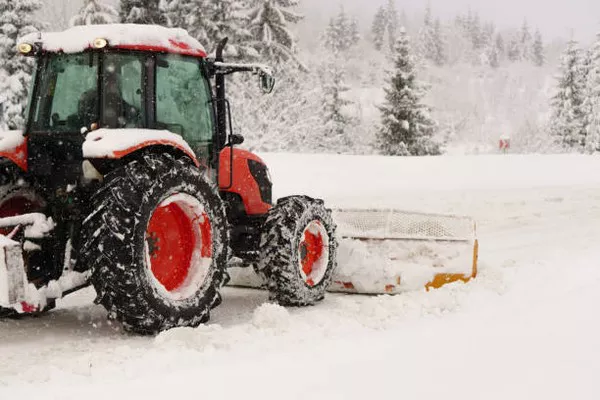A snowblower is a reliable companion during the winter months, efficiently clearing driveways and walkways of accumulated snow. However, homeowners occasionally encounter issues with their snowblowers, one of the most common being a reduced throwing distance. When a snowblower fails to propel snow as far as expected, it can lead to frustration and inefficiency. In this article, we will explore the reasons behind this problem and provide practical solutions to restore your snowblower’s optimal performance.
Improper Auger Adjustment
The auger is a crucial component of a snowblower, responsible for gathering and propelling snow into the chute. If the auger is not properly adjusted, it can significantly impact the throwing distance. Check the auger height to ensure it is set correctly according to your snow conditions. Adjusting the auger height can prevent the snowblower from scraping against the ground, allowing it to pick up snow more efficiently.
Additionally, inspect the auger blades for any damage or wear. Damaged blades can compromise the snowblower’s ability to process and throw snow effectively. Replace any worn or damaged auger blades to maintain optimal performance.
Incorrect Impeller Operation
The impeller, located within the chute assembly, plays a crucial role in propelling snow out of the machine. If the impeller is not functioning correctly, it can result in reduced throwing distance. Common issues include a damaged impeller blade, debris obstruction, or misalignment.
To troubleshoot impeller-related issues, first, inspect the impeller for any visible damage. Replace any damaged blades promptly. Next, clear the chute of any snow or debris that may be obstructing the impeller’s movement. Finally, ensure that the impeller is properly aligned and securely attached. Addressing impeller issues will contribute to restoring the snowblower’s throwing efficiency.
Wet or Heavy Snow
Not all snow is created equal, and the type of snow your snowblower encounters can impact its throwing distance. Wet and heavy snow is more challenging for a snowblower to process and throw compared to lighter, powdery snow. If you notice reduced throwing distance during wet snow conditions, it may be a result of the snowblower’s limitations rather than a mechanical issue.
In such cases, consider using a slower forward speed and allowing the snowblower extra time to effectively process the heavier snow. Additionally, adjusting the chute angle to a higher position can help compensate for the added weight, allowing the snow to be thrown farther.
Engine Power and RPM
Insufficient engine power or low RPM (revolutions per minute) can also contribute to a reduced throwing distance. Check the engine’s fuel and air filters for clogs or dirt accumulation, as these can impede optimal combustion. Replace any dirty or clogged filters, and ensure that the fuel is fresh and of the correct type recommended by the manufacturer.
Inspect the spark plug for signs of wear or fouling, and replace it if necessary. Adjust the carburetor settings to ensure the engine is operating at the recommended RPM. A well-maintained engine with proper power and RPM is essential for achieving the maximum throwing distance of your snowblower.
Worn or Loose Belts
Snowblowers rely on a system of belts to transfer power from the engine to various components, including the auger and impeller. Over time, belts can wear out or become loose, affecting the overall performance of the snowblower.
Inspect the belts for signs of wear, cracks, or stretching. If any issues are detected, replace the belts with new ones that match the manufacturer’s specifications. Additionally, check the belt tension and adjust it if necessary. Properly tensioned belts ensure efficient power transmission, allowing the snowblower to throw snow at the optimal distance.
See Also What Are Five Things To Consider When Purchasing A Snow Blower?
Conclusion
A snowblower’s reduced throwing distance can be attributed to various factors, ranging from mechanical issues to environmental conditions. Regular maintenance, including checking and adjusting the auger, impeller, engine components, and belts, is crucial to ensuring optimal performance. By troubleshooting and addressing these issues, homeowners can restore their snowblower’s efficiency and enjoy the convenience of a well-functioning snow removal tool during the winter months. Remember that preventive maintenance and timely repairs will not only extend the life of your snowblower but also enhance its overall performance.

